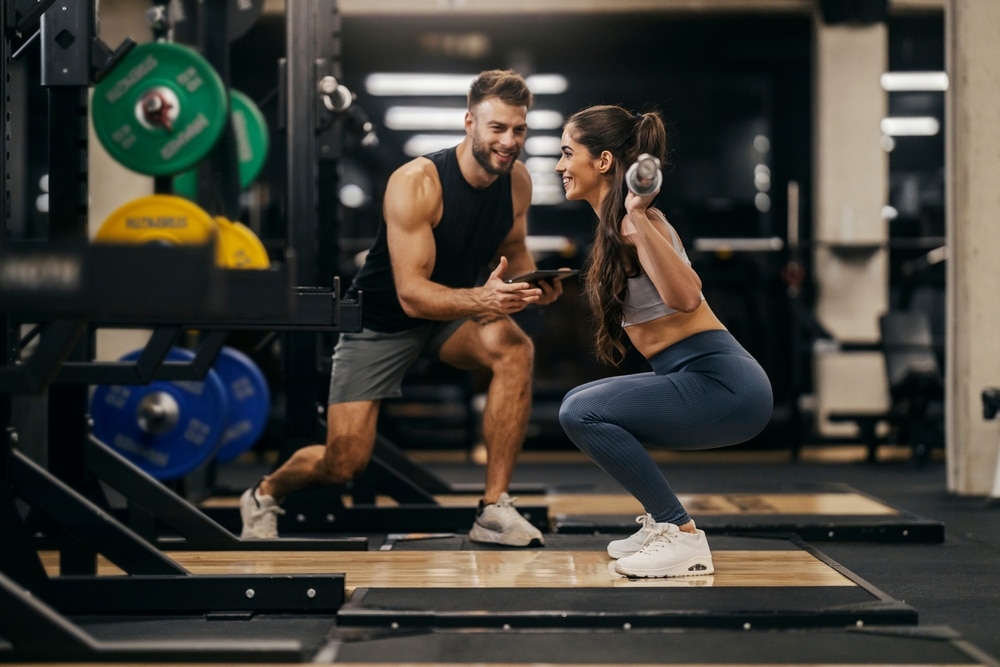7 Essential Exercises That Can Make You Stronger
If you’re passionate about fitness, you’ve undoubtedly encountered advice to activate your “posterior chain” from coaches across disciplines, from weight training to Pilates.
Katie Wetzel, CPT, a certified personal trainer and entrepreneur at Gain in Atlanta, emphasizes the importance of this muscle group.
“Envision your posterior chain as the powerhouse muscle ensemble that extends from the nape of your neck down to the base of your heels,” she suggests.
Fortifying these muscles is paramount for day-to-day activities like sprinting and hoisting objects. It also plays an essential role in dodging injuries and enhancing your posture and equilibrium, according to Wetzel.
If you’re guilty of hunching over a desk for endless hours or favoring front-dominated activities like jogging, a little extra care for your posterior chain might be overdue.
In this article, Wetzel and other health gurus break down the specifics of the posterior chain muscle group, identify signs of weakness, and share a series of exercises focusing on strengthening your backside.
Understanding Your Posterior Chain and Its Key Muscles
“The muscle group that makes up your posterior chain is essentially the entirety of your body’s rear,” remarks Hannah Davis, CPT, CSPS, a personal trainer and the proprietor of Body by Hannah Studio in Cleveland, Tennessee.
Wetzel describes, “comprising the upper and lower back, buttocks, hamstrings, and calves, these muscles synergize to enable you to rise, manage heavy loads from the ground and maintain a stable and balanced stance in your daily life.”
Regrettably, our often sedentary lives, typified by prolonged sitting, can lead to a weakening of the posterior chain, which may bring about posture issues and susceptibility to injuries.
The Perks of a Robust Posterior Chain
“A compelling posterior chain is foundational for cultivating decent posture, sidelining injuries, and amplifying overall strength,” contends Wetzel.
These muscles are also essential for spine support and performing routine tasks like shifting weighty objects and ascending stairs.
Davis elaborates, indicating that showering your posterior aspects with extra attention could also mitigate common discomforts in the lower back, knees, and shoulders that oftentimes arise from muscular imbalances and weaknesses.
Enhanced muscle mass, metabolic function, and movement fluidity are additional upshots of posterior-focused training, which Davis says is particularly important for aging gracefully.
Identifying a Weakened Posterior Chain
“You might need to put a spotlight on strengthening the posterior if you’re familiar with recurring lower back soreness, or if maintaining a solid, steady posture during exercises such as squats, lunges, or deadlifts—or even simply lifting a heavy box or laundry basket—proves challenging,” suggests Wetzel.
Moreover, if your routine involves extended periods of sitting or primarily forward motion activities like boxing, increased reinforcement for your body’s backline is in order to avert muscular imbalances.
Davis recommends trying a straightforward single-leg glute bridge test to evaluate your posterior chain’s strength: While in a raised glute bridge, extend one leg outward, lower it to the ground and back up. If your hips dip or wobble, or if keeping your balance on one leg is difficult, Davis says it’s a clear sign that your regimen should incorporate more posterior chain exercises.
“This muscular ensemble—including the upper back, lower back, buttocks, hamstrings, and calves—collaborates to grant you the ability to stand upright, lift burdensome objects, and stay balanced and poised in your day-to-day endeavors.” —Hannah Davis, CPT, CSPS
Top Exercises for a Supple Posterior Chain
Target the muscles along the rear of your body—from neck to ankles—to foster better stability, posture, and poise through these exercises.
For exercise novices, consider easing into it by integrating one or two of the movements that don’t require extra weights into your weekly routine. More seasoned fitness enthusiasts can challenge themselves by performing the full battery of movements, incorporating weights, three to four times each week.
1. Glute Bridge
- Get comfortable on your back with bent knees, feet planted at hip distance, arms resting by your side.
- Brace your core by pressing your lower back to the grounds, cinching your ribcage and hips towards one another.
- Keeping that alignment, drive your heels down, clench your glutes, and elevate your hips into a straight line aligning your knees, hips, and shoulders.
- Hold this bridge for a few heartbeats, then gradually lower back to the start position.
- Perform this 10 to 15 reps.
Intensify the exercise by sandwiching a Pilates ball or a ring between your knees or placing a weight upon your upper thighs.
2. The Superhuman Extension
- Begin face-down on a mat.
- Stretch your arms above your head and lengthen your legs behind you.
- Elevate your arms, chest, and legs by engaging your back and glute muscles.
- Maintain this elevated pose for a couple of seconds, ensuring your back muscles remain active.
- Gently return your arms, chest, and legs to the floor.
- Aim for 5 to 10 repetitions.
To avoid strain, maintain a neutral neck by directing your gaze downward. Introduce a lightweight resistance band around your wrists or ankles to up the challenge for your posterior chain.
3. Kettlebell Pendulum
- Stand with your feet a foot’s distance from the kettlebell.
- Push your hips back and bend your knees to lean forward and grip the kettlebell handle, angling it toward you.
- Maintain an uplifted head and tense the handle to engage your lats and depress your shoulders
- Draw the kettlebell back, then explosively swing it up by thrusting your hips forward as you stand, lifting the kettlebell to your shoulder level.
- Rebend your knees and hinge at the hips as the kettlebell descends back toward the starting position.
- Execute this for 15 to 20 swings.
Bent-over Row Exercise
- Adopt a stance matching your shoulder width, and bend your knees a tad.
- Grasp a dumbbell in each hand, palms turned inward, letting your arms be fully extended at your side.
- Lean your upper body forward from your hips, keep your spine neutral, and stop when your upper body is nearly horizontal. Your arms should now dangle straight down in alignment with your shoulders.
- Maintain a braced core and draw the dumbbells up to your waistline by bringing your shoulder blades close together.
- Pause when you’re all the way up to intensify the tension on your upper back muscles. Then, lower the dumbbells back with control to where you started.
- Complete a set of 12 to 15 repetitions.
BEGIN WITH LIGHTER WEIGHTS for solid technique, and position yourself sideways to a mirror to keep an eye on your form without having to turn your head.
5. Barbell Hip Thrust
- Begin by sitting on the floor with your legs bent and feet placed a bit wider than your hips, angled outward slightly.
- Lean against a weight bench or step with your upper back and position a barbell across your lap. Put a cushion underneath for extra padding if necessary.
- Grip the bar overhand to stabilize it and thrust your hips skyward, lifting the bar until your body forms a straight line from shoulders to knees.
- During the lift, pull your belly in, keep your chin tucked, and lower the bar gently to the floor after a brief pause.</within a hip hinge. Keep your back firm and let the weights skim your legs as they descend.
- Engage your glutes and power back to stand up fully.
- Carry out 15 to 20 reps.
INITIATE this exercise with only your body weight or a light weight to avert injuring your back and to polish your technique.
6. Romanian Deadlift
- Adopt a hip-width stance, soften the knees, and grip the dumbbells in front of your thighs, palms facing you.
- Send your hips backwards as you slide the weights down your legs, arching your back only slightly and keeping the weights close.
- Descend until there’s tension in your hamstrings or you can’t hinge further at the hips.
- Push through your heels to rise back into your starting posture, driving your hips forward.
- Perform 15 to 20 repetitions.
WORK ON the notion of rolling a lint brush down the front of your legs, maintaining a flat spine throughout.
7. Gorilla Row
- Place two kettlebells forward of your toes, bend at the hips, slightly squatting, and rest a hand on each kettlebell handle.
- In an alternating fashion, push one kettlebell downward actively while hoisting the other towards your ribcage.
- Aim for 10 to 15 pulls per side.












